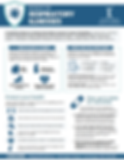A respiratory illness is a disease that affects a person’s lungs or breathing. Viruses are a common cause of respiratory illness, especially during fall and winter — sometimes called “cold and flu season.” Bacteria can also cause respiratory illnesses, such as whooping cough.
Examples of respiratory illnesses include:
Common colds (rhinovirus, coronavirus, and other viruses)
Flu (influenza viruses)
RSV (respiratory syncytial virus)
COVID-19 (novel coronavirus: SARS-CoV-2)
Whooping cough (pertussis)
View our Respiratory Illness Report to learn about current respiratory virus trends.

Disease Information
Communicable diseases are diseases that spread between people or animals. Click on the buttons below to learn about specific diseases. For more disease information, visit the CDC's health topics index.

Our vision:
A safe and healthy Kitsap County for all.
Communicable Disease Data Dasbhoards
This report displays respiratory virus trends for Kitsap County based on data from healthcare facilities and laboratory testing. The Respiratory Illness Report is published weekly during respiratory illness season (typically fall and winter months) and published monthly when respiratory illness activity is low. You can subscribe to receive this report by email or text.
Symptoms
Different respiratory illnesses have different symptoms. Runny nose, coughing, sneezing, tiredness, fever, and sore throat are all symptoms commonly associated with seasonal respiratory illnesses. Learn more about symptoms of colds, flu, RSV, COVID-19, and whooping cough.
Note: "Stomach flu" or "stomach bugs" involving diarrhea and vomiting are not typically related to influenza (flu). "Stomach flu" is often caused by norovirus, an extremely contagious virus that causes gastrointestinal illness.
Who is most at risk?
Seasonal respiratory illnesses, such as cold and flu, are often mild but can cause severe complications. Some people are at higher risk for severe illness, including:
infants and young children
older adults
people who are pregnant
people with certain health conditions
What to do if you are sick
Care for yourself at home if you have mild symptoms and are not at high risk for severe illness:
Get plenty of rest
Drink fluids
Use over-the-counter medications to ease symptoms, such as fever or headache.
Contact a healthcare provider if you are concerned about symptoms or are at high risk for severe illness:
Call your regular healthcare provider or a clinic
Call a nurse hotline (a hotline may be available through your insurance plan or your healthcare provider)
Seek medical care right away if you or a household member are experiencing severe symptoms, such as difficulty breathing or dehydration:
Call 911 or go to the closest hospital emergency room.
See more recommendations from the CDC.
Preventing respiratory illnesses
Take simple steps to prevent getting or spreading illnesses
Avoid close contact with people who are sick
Wash your hands frequently
Avoid touching your face with unwashed hands
Stay at home as much as possible when you are sick. Keep children home from school or daycare
Consider wearing a mask when you are in crowded indoor spaces
Stay up to date on immunizations (vaccines)
A yearly flu vaccine is recommended for everyone ages 6 months and older.
COVID-19 vaccination is recommended for everyone ages 6 months and older.
RSV immunizations are available for people at higher risk for severe illness, including older adults and infants.
Whooping cough vaccination is recommended for everyone
Contact your healthcare provider or go to vaccines.gov to find vaccines near you. Learn more about recommended immunizations at cdc.gov/vaccines.

Using a mobile device? These data dashboards cannot be viewed on a phone or tablet. Please visit this webpage from a computer.
Rabies Data
Respiratory Illnesses
Healthcare Provider Resources
Looking for more healthcare guidance or resources? Visit our Provider Resources page.










.png)
